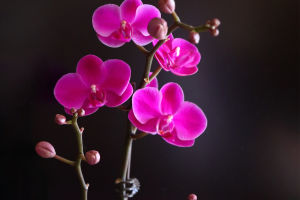The Lifespan of Ginkgo Trees
The Ginkgo tree is considered one of the most precious tree species in the world and is often referred to as a "living fossil" due to its status as the oldest gymnosperm remaining after the Quaternary glacial movement. It is also the oldest living seed plant in existence.
Due to the rarity of ginkgo trees, it takes more than 20 years from planting for them to produce fruit. These trees have a relatively long lifespan of over a thousand years, which is quite impressive.
Ginkgo trees are renowned for their resilience to diseases, pollution, smoke, and dust, making them a prime example of a pollution-free tree species. In the grand presence of trees, even the oldest human seems insignificant. Nature harbors many plant species that surpass human lifespans: the Norwegian spruce, standing tall at 9,560 years old; the enduring bristlecone pine, reaching 4,850 years; and the venerable ginkgo tree, nearing the age of 4,000 years.
Ginkgo trees can thrive for thousands of years due to their evolved stress-relief mechanisms, but humans cannot match them. The longevity of ginkgo biloba has puzzled scientists for generations. Some researchers even hypothesize that the ginkgo tree's inherent nature is geared towards eternal life.
To unveil the mystery, the researchers have collected 34 tissue samples of healthy ginkgo trees and conducted the most comprehensive research on ginkgo so far. After studying the age of ginkgo, it was found that the growth of ginkgo did not slow down after hundreds of years. On the contrary, sometimes, their growth speed accelerates.
More importantly, all health indicators such as the size of these trees, the ability of photosynthesis, and the quality of the seeds have not changed with age. To find out what happened at the genetic level, the researchers compared the genes of the leaves.
When researchers studied the genes in the formation layer of trees, they found no difference between young and old trees. It shows that while organs such as leaves may die off, the trees itself is unlikely to die from aging. However, most trees are unable to live their full life span due to factors such as pests or droughts, which can cause them to die prematurely.
Researchers have found that in the face of external pressures, trees of different ages have no difference in genes.
However, ginkgo trees exhibit resilience against pests and droughts by producing protective chemicals. As they age, ginkgo trees retain their ability to withstand external pressures, contributing to their longevity spanning thousands of years.
The primary benefits of ginkgo leaves include:
1. Ginkgo leaves can be used to make tea, which significantly reduces serum cholesterol levels and inhibits fat in the body.
2. Ginkgo leaf extract has a significant effect on preventing coronary heart disease and angina pectoris. It can improve myocardial blood flow to protect the function of the ischemic myocardium, which is of great significance in preventing cardiovascular and cerebrovascular disease. Ginkgo leaves are the most ideal drug component of cardiovascular prevention of cardiovascular disease in the world.
3. Ginkgo biloba extract is still a strong free radical clearing agent and metabolic enhancer. This prevents the oxidation of brain cells, boosts brain cell metabolism, enhances brain function significantly, and delays brain aging.
Ginkgo trees stand out not only for their longevity and resilience but also for the myriad health benefits offered by their leaves. Its leaves and extracts have proven to be valuable assets in maintaining overall well-being. The ginkgo tree remains a symbol of endurance and vitality, offering both beauty and health benefits to those who appreciate its remarkable qualities.


